
🎣 Why Invest in a Surf Fishing Rod? 🌊
Welcome, avid anglers and beach enthusiasts! 🏖️ Ever wondered why some fishers at the beach seem to pull in the biggest catches with ease? The secret’s in their rod. Surf fishing rods are specially designed to handle the unique challenges posed by beachfront fishing, and here’s why you should consider getting one:
🚀 Long Casting Abilities
Surf fishing rods allow for much longer casts than regular rods. Get your bait beyond the breakers and into deeper waters where the bigger fish reside.
💪 Durability
Built to withstand the salty spray of the ocean and the weight of larger catches, these rods are constructed with durability in mind.
🎯 Precision & Sensitivity
Their length and specialized build ensure that you can detect even the slightest nibble, allowing you to react swiftly.
🌌 Versatility
Surf fishing rods can be used in various conditions, from calm days to stormy ones. They are versatile and adapt well to changing ocean conditions.
🎢 Elevated Experience
The joy of surf fishing is unparalleled. With the sound of waves crashing, the feel of sand under your feet, and the potential for a big catch, you’re set for a thrilling experience.
So, if you’re looking to up your fishing game and enjoy the beach to the fullest, investing in a specialized surf fishing rod is the way to go. Experience the difference today! 🌟🐟🌅
🕰️ Historical Evolution of Surf Fishing Rods
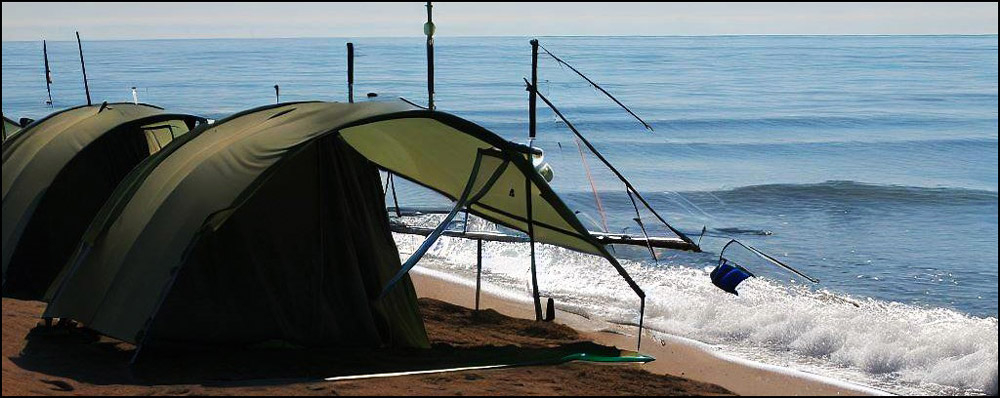
Surf Fishing: A Trip Down Memory Lane
Surf fishing, the art of casting lines from the shoreline or wading into the surf, traces its roots back to ancient civilizations. Indigenous communities, residing along coastlines, utilized rudimentary fishing techniques to catch fish from the shore.
The Birth of the Surf Fishing Rod
As the passion for surf fishing burgeoned, there arose a need for specialized equipment that could enhance the fishing experience. Enter the surf fishing rod. Early iterations were often made of bamboo, which provided both flexibility and strength. However, these rods were quite heavy, making them cumbersome for long hours of fishing.
The Twentieth Century: A Period of Innovation
With the introduction of fiberglass in the 1940s, surf rods experienced a revolution. 🚀 Fiberglass rods were lighter, stronger, and more durable than their bamboo counterparts. By the late 20th century, another transformation was on the horizon. Carbon fiber, known for its incredible strength-to-weight ratio, became the material of choice for many manufacturers.
Modern-Day Mastery
Today’s surf fishing rods are a culmination of centuries of evolution, combining traditional knowledge with modern technology. With features like corrosion-resistant guides, ergonomic reel seats, and varying lengths and actions tailored to specific fishing needs. 🌊🎣
TOP 10 Best Rods for Surf Fishing
To save your work and make your life easier, I analyzed the top-selling surf rod models and came up with a list of 10 that I think are the best. Rods with excellent performance, good wear resistance, and, of course, the best performance/price ratio.
1# St Croix Triumph Surf Spinning Rod
I want to say that this is the best rod for surf fishing. The rod is based on high-quality SC-II graphite, which is characterized by increased strength properties. This includes guides with an aluminum oxide insert in a black steel frame. The unique St. Croix Integrated Poly Curve (IPC) technology allows you to create optimal forms using unique cores. After many years of work, St. Croix specialists have created an advanced technology for the automated process of curvilinear cutting of blanks.
This technology is called Taper Enhancement Technology (TET). To further increase the strength and durability of blanks, St. Croix specialists have developed a modern technology for impregnating carbon fiber with resinous compounds, called Fortified Resin System (FRS). The use of FRS made it possible to prevent micro-foaming of impregnating compositions during curing and to increase the strength of blanks by 33% compared to traditional impregnation methods.
2# Tica UGSA Series Surf Spinning Fishing Rod
I decided to buy this rod after hearing positive feedback from a friend of mine. He thinks this is the best surf rod in its price range. The blank is incredibly durable, responsive thanks to its material. It is made from TC3 high modulus graphite. The line runs smoothly through the guides. Fuji Hardloy ring guides prevent line tangling. You will have complete control of your rod thanks to the comfortable cork handle. Available in lengths from 8 to 12 feet.
3# St. Croix Mojo Surf Graphite Saltwater Spinning Fishing Rod
If you value the high performance of a product but do not want to spend a fortune on it, then I advise you to pay close attention to this model. You will feel a superior rod in your hands: light, strong, and responsive like no other rod tested before. This accessory is made from the most popular material such as graphite fiber. You will feel comfortable gripping the X-WRAP handle. Even while fighting a huge fish, you will feel the maximum comfort. The model is equipped with lightweight surf guides with zirconium rings and black frames.
4# Okuma Longitude Surf Graphite Rods
This rod is specially designed for surf lovers. This equipment is moderately priced, but it combines a number of high-quality elements that make it a very high-performance piece of equipment at a much more reasonable price. It has high strength and sensitivity due to the graphite composite billet. You will feel any bites, but you will be able to make long casts. The model is equipped with double guides made of stainless steel, which ensures the movement of the line without getting stuck!
5# PENN Battalion Surf Spinning
This is one of the most powerful inshore fishing rods available. The one-piece rod blank is made using high-quality carbon and composite materials, ideal for catching large marine fish such as tuna, cod. To make a tackle such as this surf rod, you had to have the highest qualifications in the coastal sea fishing profile. And therefore, the company actively uses the advice of famous fishing world champions.
A powerful, resilient blank will allow long-distance casting of a heavy sinker weighing 100-250 grams, often in a headwind or even worse rain. It has large LTS rings protected against corrosion. They will prolong the life of the braided lines and will not rust in the conditions of aggressive saltwater. It fits perfectly into the sophisticated American tackle design with a practical handle finished with durable EVA.
6# Tsunami Airwave Elite Spin Fishing Rod
This model is universal for catching a predator on the shore. Thanks to this spinning rod, all kinds of ultralight lures can be used. It is made of high modulus Pro graphite. This model is characterized by lightness, elasticity, and the ability to withstand loads. The spinning rod has a super-fast action, the rod does not bend completely when attacking a predator. During the fight to play a large predator with an ultra-light rod, the tackle is loaded evenly, due to its balance. The set of this model includes wear-resistant and lightweight rings, a comfortable Fuji reel seat, an ergonomic handle made of dense microporous material.
7# DBLUE Surf Conventional Rod
Surf rod, thanks to which you can make extremely long casts with heavy lures. With this rod, your fishing will be very pleasant. Thin, light, fast action, reinforced with winding, wonderful guides, and interesting styling create a very modern tackle. It is made from titanium graphite. The EVA upper and lower handles will keep you comfortable throughout your fishing!
8# Fiblink Surf Spinning Fishing Rod
Combining power and lightness at a very competitive price. Low weight means, for example, throwing the line over long distances in an attempt to catch larger and valuable fish. Ideal for both beach and cliff fishing. Carbon fiber construction provides high sensitivity and durability. The guides are made from a mix of stainless steel and ceramic. This indicates their high quality, corrosion resistance. Plus, you’ll save yourself the trouble of fishing line.
9# Goture Surf Spinning Fishing Rod
It is the ideal rod for advanced anglers. It achieves great launch distances due to its materials, but mostly if the right technique is applied. Thus, it is a product that gets all its characteristics in the hands of experts. With great resistance, power, and lightness. With the right presentation, you can even outperform your competitors by 25%. Always remember that adapting the rod to the person using it is the main benefit of getting the most out of it. The product is made from carbon fiber. It is equipped with a non-Slip rubber shrink tube handle for a comfortable pastime.
10# Ugly Stik Carbon Spinning Fishing Rod
Due to its advantages, it more than meets the requirements of both beginners and more experienced fishermen. According to some users, the weight of the leads with which it responds best is in the range of 110 to 125 grams. The rod has a graphite tip that lets you know even the smallest fish bites. The guides are made of stainless steel. They can be used with any type of line.
What is Surf Fishing?
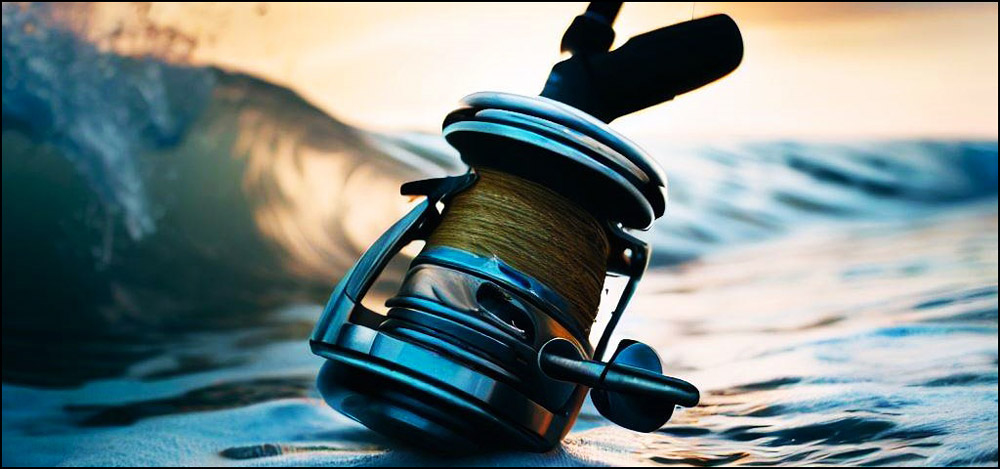
When I first asked my son what surf fishing is, I almost fell out of my chair laughing when I heard his answer. He replied that it was surfboard fishing. Agree that it looks very funny in your head. In fact, surf fishing usually boils down to one basic principle. Fishing takes place in sea conditions without the use of a boat and from the shore. Fishing without a boat can save you money, as many who love the sport spend a lot on a vehicle that needs to be stored and maintained somewhere else.
The ability to move at ease on the beach gives the angler more freedom to enjoy. For many anglers, getting the fish out of the water by wading through the impact of the waves can be more thrilling than catching from the comfort of the boat.
Which to Choose?
The most experienced anglers using this special fishing technique usually carry at least 3 rods of different lengths, ranging from 3.80 to 5 meters. Thus, they can travel long different distances.
Surf rods can be:
- Telescopic: They range in length from 390 to 450 centimeters and can be parabolic, peak, or progressive. They are the best selling ones.
- Connecting rods: sleeve or split, ideal for incredibly long casts. These are very strong and precise rods.
- Mixed: half of the barrel is telescopic and the other half is fixed. This is a model that has enjoyed extraordinary success for several years now.
Surf Rod Accessories
Choosing a good rod means not only focusing on the material of the structure and its type. Accessories also play a fundamental role:
- Surf rod reels: For this technique, you can use fixed spool reels (recommended for newcomers to this fishing technique) as well as spinning reels (more difficult to handle). Both must have certain technical characteristics: maximum speed when casting and lifting; adjustable and stable friction; a system for easy coil change.
- Rod Holder: surf rods are quite heavy and cannot be held in your hand for long. For this reason, we recommend very comfortable legs for setting your rod on the shore. They provide great stability.
- Guides: The best surf rods are equipped with very strong double bridge guides.
🔍 Anatomy of a Surf Fishing Rod
Understanding the very essence of surf fishing rods is paramount for every passionate angler. It’s not just a stick with a line. Let’s dissect the core elements that make up this essential tool:
🔬 Material: The Backbone of the Rod
Fiberglass: One of the earliest materials utilized in modern surf fishing rod design, fiberglass offers a balanced combination of flexibility and strength.
- Durable and can endure rigorous fishing sessions.
- Generally more affordable than carbon fiber.
- Offers a smoother, parabolic bend which is great for long fights.
Carbon Fiber (often termed as Graphite): A more recent innovation, carbon fiber rods are celebrated for their lightweight properties and high sensitivity.
- Lighter than fiberglass, allowing for longer casting sessions without fatigue.
- Extremely sensitive, making it easier to detect subtle bites.
- Stiffer, which can translate to longer casting distances.
📏 Length: Casting Distance vs. Control
The length of a surf fishing rod can significantly affect its performance:
Shorter Rods (7-9 feet):
- Better control for precision casting.
- Ideal for fishing spots with obstructions or heavy vegetation.
Longer Rods (10-14 feet or more):
- Allows for longer casting distances, reaching deeper waters.
- Useful in open beach areas with few obstructions.
🌊 Action: The Rod’s Response
The action of a rod describes how and where it bends when pressure is applied.
Fast Action:
- Bends mostly near the tip.
- Offers a quicker response, ideal for setting hooks quickly.
- Best for larger, heavier lures.
Medium Action:
- Bends in the top half of the rod.
- Versatile, making it suitable for a variety of fishing conditions and species.
- Balances sensitivity and strength.
🛠️ Reel Seats & Guides: Holding It All Together
Reel Seats: The anchor point for your reel. Look for reel seats that are:
- Corrosion-resistant, especially important for saltwater fishing.
- Sturdily built to secure the reel without wiggling.
Guides: The loops that guide the line down the rod.
- Seek guides made of materials resistant to saltwater corrosion, like ceramic or titanium.
- Ensure evenly spaced guides for smooth casting and retrieval. 🌊🎣🌅
🚀 Casting Mechanics: The Superiority of Surf Rods

For many, casting a line into the vast expanse of the ocean is more than just a throw; it’s an art, a science, and a testament to human ingenuity. When it comes to surf fishing, the mechanics of casting truly shine, and the design of surf rods plays a pivotal role. Let’s dive into the captivating world of casting mechanics and discover the nuances that make surf rods unparalleled in their performance.
🌀 The Pendulum Cast: Physics in Play
At its core, the pendulum cast is a harmonious blend of timing, technique, and equipment. Here’s a breakdown of its physics:
- Start with the lure or weight swinging (like a pendulum) beneath the rod.
- As the weight swings forward, a simultaneous, powerful upward thrust of the rod is initiated.
- This combination results in a high-speed arc, launching the bait or lure out into the sea.
- The pendulum cast capitalizes on the principles of momentum and leverage, maximizing the potential casting distance.
When executed correctly, this technique can significantly enhance casting distance, making it a favorite among seasoned surf anglers.
📏 The Extended Advantage: Role of Rod Length
The adage ‘size matters’ rings particularly true in the world of surf fishing.
- Greater Distance: A longer rod acts as a larger lever, providing increased casting distance. Simply put, the longer the lever, the farther you can fling your bait.
- High Line Retrieval: Longer rods also mean that the line enters the water at a steeper angle, keeping your bait above the breaking waves and closer to the target fish zone.
⚖️ Finding the Balance: Rod Length vs. Casting Weight
While a long rod can cast farther, there’s a delicate balance to maintain with casting weight:
- Heavier Weights: Longer rods can handle and cast heavier weights, which is especially beneficial in strong currents where a heavier sinker is needed to keep the bait grounded.
- Rod’s Casting Range: Every surf rod has a recommended casting weight. Overloading can lead to poor casting, reduced accuracy, or even rod damage.
- Synergy: The right combination of rod length and casting weight, tailored to specific conditions, can elevate your surf fishing experience. 🌊
✅ Picking the Right Surf Fishing Rod: A Professional’s Checklist
Selecting the perfect surf fishing rod isn’t just about grabbing the shiniest or longest one on the rack. It’s an intricate process of understanding your needs, assessing the options, and making informed decisions. As every seasoned angler knows, the right rod can be the difference between an unforgettable fishing expedition and a frustrating day at the shore. Let’s navigate the process with this professional’s checklist:
🎯 Purpose: Fish Species & Conditions First
- Know Your Fish: Understand the species you’re targeting. Larger species require sturdier rods, while smaller species can be pursued with lighter rods.
- Example: If you’re aiming for heavyweights like tarpon or shark, opt for a strong, fast-action rod.
- Assess the Conditions: Consider the environment and weather.
- Surf Conditions: In rough surf with strong currents, a heavier and longer rod is beneficial.
- Wind Conditions: Windy days may require heavier lures and sinkers, demanding a rod that can handle the added weight.
💸 Budget vs. Quality: The Golden Equilibrium
- The Investment Perspective: While it might be tempting to go for the cheapest option, remember that a good-quality rod is an investment in your fishing future.
- Quality Indicators: Look for features like corrosion-resistant reel seats and guides, high-quality materials (carbon fiber or premium fiberglass), and a comfortable grip.
- Setting Limits: Set a realistic budget but be ready to stretch slightly for quality. Often, a marginal increase in cost can result in a significant upgrade in rod quality.
🌟 Brand Reliability: Trusted Names in the Game
- Industry Leaders: Brands like Shimano, Penn, and Ugly Stik have built reputations over the years for producing reliable and durable surf rods.
- Personal Experience: Ask fellow anglers for recommendations. Personal testimonials often provide insights that generic reviews can’t.
- Warranty & Support: A brand that offers a good warranty and responsive customer service is a testament to their confidence in product quality.
🚫 Common Mistakes and Misconceptions

Let’s debunk some common myths and highlight typical rookie errors to ensure your surf fishing endeavors are based on facts, not fiction.
🕵️♂️ Debunking Surf Fishing Rod Myths
“The Longer the Rod, the Better”
Truth: While longer rods can cast further distances, it’s essential to choose a rod length based on your specific needs, target species, and fishing environment.
“All Surf Rods are Saltwater Resistant”
Truth: Not all surf rods are designed to withstand the corrosive effects of saltwater. Ensure the rod has corrosion-resistant components, especially if frequently used in saltwater conditions.
“Expensive Equals Quality”
Truth: A high price tag doesn’t always guarantee a top-quality rod. It’s crucial to consider factors like materials, construction, and brand reputation instead of just the price.
😬 Common Errors Made by Beginners (And How to Sidestep Them)
Overloading the Rod
Mistake: Using weights or lures that exceed the rod’s recommended casting weight.
Solution: Always check the rod’s specifications. Overloading can reduce casting accuracy and even risk breaking the rod.
Ignoring Maintenance
Mistake: Neglecting to clean the rod after fishing sessions, especially after saltwater use.
Solution: Rinse your rod with freshwater after each use and occasionally check for any signs of wear or damage.
Choosing Based on Looks Alone
Mistake: Buying a rod based solely on its aesthetic appeal.
Solution: While aesthetics matter, prioritize functionality, durability, and suitability for your fishing needs.
Sticking to One Technique
Mistake: Reluctance to adapt and try new casting techniques or tactics.
Solution: Surf fishing is dynamic. Experiment with different casting methods and lures to find what works best in various scenarios. 🎣🌊
🌊 Beyond the Rod: Gearing Up for Surf Fishing Success

While the surf fishing rod undoubtedly plays a starring role in your angling adventure, it’s just one piece of a larger ensemble. Equipping yourself with the right supporting cast ensures not just a catch but a truly enriching experience by the surf. Dive in as we explore the unsung heroes of surf fishing equipment and their undeniable importance.
🎣 The Triad of Success: Reels, Lines, and Bait
Reels: The reel is your rod’s partner in crime.
Spinning Reels: Ideal for those starting their surf fishing journey due to their ease of use.
Baitcasting Reels: Perfect for seasoned anglers looking for precision and control. Ensure it’s designed for saltwater use to resist corrosion.
Lines:
Monofilament: Stretchy, abrasion-resistant, and perfect for general surf fishing needs.
Braided Lines: Offers a thinner diameter for the same strength, allowing for longer casts. It has no stretch, providing better sensitivity.
Bait Choices:
Natural Baits: Such as shrimp, squid, or live baitfish, are irresistible to many fish species.
Artificial Lures: They can mimic prey, generate vibrations, or reflect light to attract fish. Essential to have a diverse range in your arsenal to cater to various fish and conditions.
🧰 Additional Gear to Enhance Your Surf Fishing Experience
Rod Holders: Secure your rod in the sand, freeing your hands and ensuring your rod doesn’t get pulled into the water by an enthusiastic fish.
Tackle Boxes: Keep your hooks, lures, sinkers, and other essentials organized. Opt for waterproof and salt-resistant ones for longevity.
Protective Clothing:
- UV Protective Shirts: Safeguard against the sun’s harsh rays.
- Wading Boots: Provides a grip on slippery surfaces and protection against sharp objects. 🌅🎼
❓ FAQ: Surf Fishing Rods 🌊
🎣 Wrapping Up: The Essence of Successful Surf Fishing
As the waves crash and the horizon beckons, the allure of surf fishing becomes ever more apparent. And at the heart of this thrilling adventure lies the trusty surf fishing rod. But, as we’ve journeyed together through the intricacies of the sport, it’s clear that the rod is just the beginning.
🌟 The Significance of the Right Surf Fishing Rod
A well-chosen surf fishing rod is akin to the bow of a skilled archer or the paintbrush of a master artist. It’s not merely a tool, but an extension of the angler, channeling their skill, intuition, and passion. With the right rod in hand, the vastness of the sea becomes a canvas, teeming with potential.
🌍 A Holistic Approach to Surf Fishing
Yet, as with any pursuit, true mastery goes beyond equipment. It’s a blend of:
🔳 Knowledge: 📚 Immerse yourself in continuous learning. Understand the species, tides, and techniques. Every fishing session is an opportunity to learn and grow.
🔳 Sustainable Practices: 🍃 The ocean is a treasure. Embrace catch and release, respect size and bag limits, and avoid sensitive habitats. Ensuring that the marine ecosystem thrives is a responsibility every angler shares.
🔳 Quality Gear: 🎣 Beyond the rod, investing in quality gear – from reels to protective clothing – elevates your experience, ensuring durability and efficiency.
🌅 Setting Sail Towards Greater Adventures
So, as the sun sets on our exploration, remember: surf fishing is as much an art as it is a science. Equip yourself with the best, but also enrich yourself with knowledge and a sense of stewardship. The waves await, and with every cast, a new story unfolds. Dive in, explore, and cherish every moment by the surf. Here’s to tight lines and endless adventures! 🌊🐟🌟
📚 Additional Resources & References! 🎣
Embarking on your surf fishing journey or looking to further hone your skills? The vast ocean of information can seem overwhelming. But worry not! We’ve curated a selection of resources to steer you in the right direction.
🔗 Recommended Products for the Avid Angler
Surf Rods: Top 10 Surf Fishing Rods of 2023 – A comprehensive review of this year’s bestsellers.
Reels: Saltwater-Resistant Reels Guide – Find the reel that can brave the ocean’s wrath.
Tackle Gear: Essential Tackle for Surf Fishing – From lures to lines, this guide has you covered.
📺 Tutorials to Elevate Your Game
Casting Techniques: Mastering the Pendulum Cast – Unlock greater casting distances with this technique.
Bait Selection: Natural vs. Artificial: What to Use When – A deep dive into the world of baits.
📖 Further Reading Materials for the Enthusiast
Books: The Complete Guide to Surf Fishing – A detailed exploration of techniques, equipment, and tips.
Blogs: Surf Fishing Diaries – Personal anecdotes, lessons learned, and tales from the sea.
Research Articles: The Science Behind Tides & Fishing – Unraveling the mysteries of how tides influence fish behavior.
Tags: #best surf fishing rods / #best surf fishing rods and reels / #best rods for surf fishing / #best saltwater surf fishing rods / #best telescoping surf fishing rods / #what are the best surf fishing rods

I live in Tenerife (Canary Islands) for the last 10+ years and share my daily fishing experiences on my website. Many years of personal experience as a fisherman and the vast experience of my friends allow me to write professionally on any fishing topics (from choosing a flashlight and equipment to deep-sea fishing).
All of my advice is based on practical real-world experience and will be useful to both novice anglers and professionals. Read more about the author.
Affiliate Disclosure: FishReeler.org sometimes gets paid for listings, through sponsors or affiliate programs like Amazon, Ebay, Cabelas, Bass Pro Shop, Shimano, Daiwa, Rapala, Renn, Okuma, KastKing, etс. Clicking a link helps keep FishReeler.org free, at no extra cost to you!
About the author: Each article is verified by the fishing expert Sergio Smirnoff. The articles are written by professional and amateur fishermen with 20+ years of fishing experience.
Note: The views and opinions expressed in this article are those of the authors and do not necessarily reflect the official policy or position of any agency. The articles are for informational purposes only, share your opinions in the comments and join the fishing discussions, let's share our fishing experiences together!


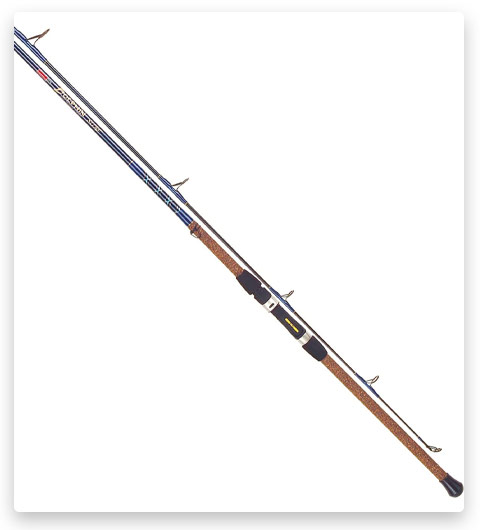



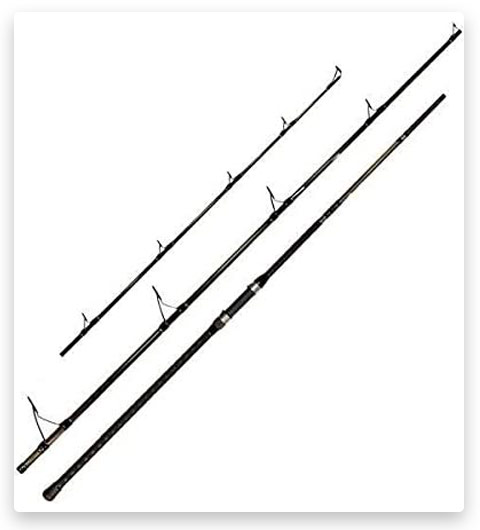
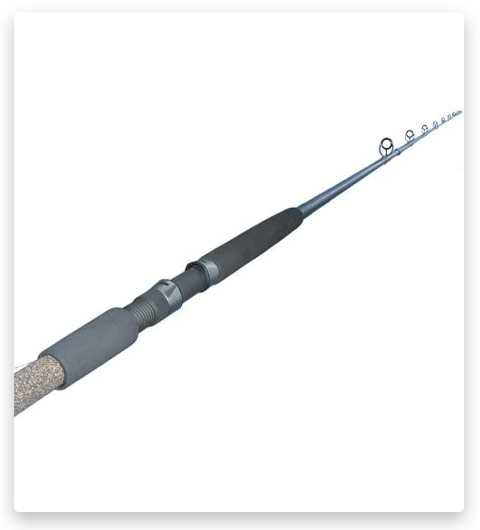
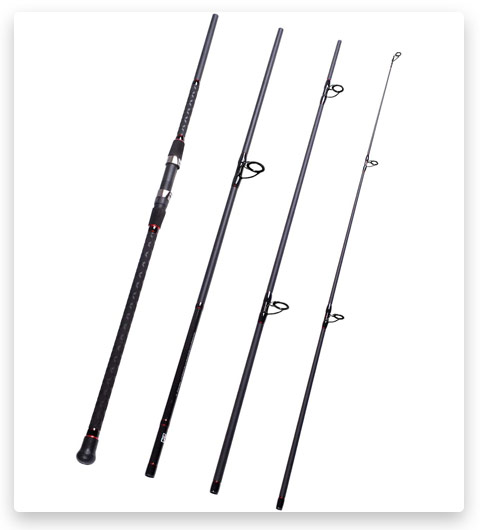
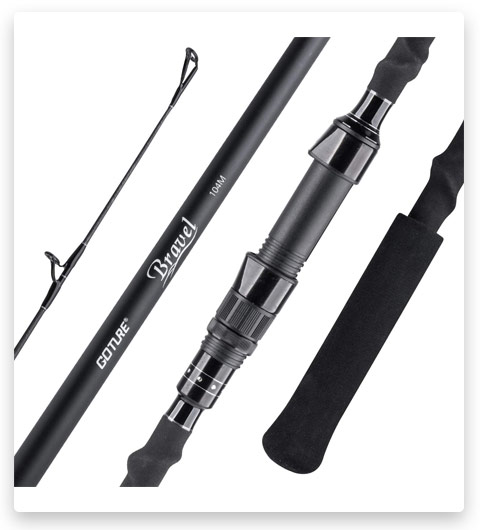
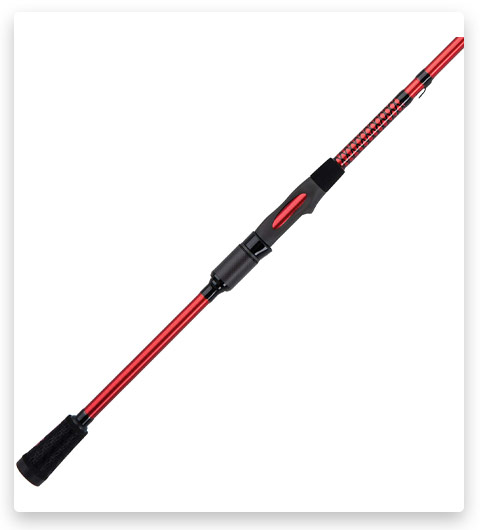
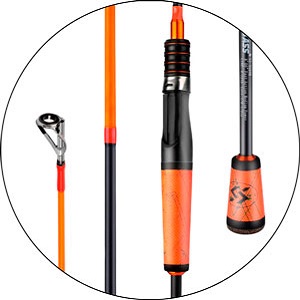



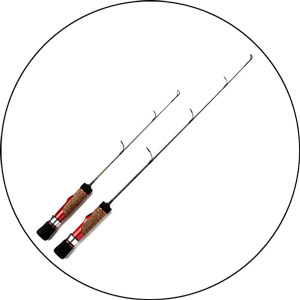
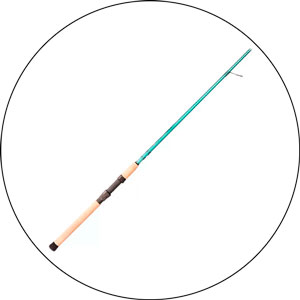
I completely agree that the level wind can have a huge impact on casting distance and can also be a pain when it comes to sand ruining it. That’s why I personally prefer to avoid it when trying to cast for distance. In my experience, the Squall Casting Special is a great reel that can handle the job well. Personally, I have the Fathom Casting Special and it’s been an excellent choice for me.
When it comes to distance casting, a longer rod is definitely one of the most important factors. However, it’s worth noting that Penn isn’t exactly known for making lightweight gear! That being said, if you can let me know your budget, I can definitely offer some pointers on which rod companies to look into. There are different tiers of rods available based on how much you’re willing to spend, and a custom rod might also be an option if you’re finding longer rods too unwieldy.
Lastly, it’s worth considering your technique. Practicing your technique can make a huge difference in your casting distance. I recommend watching some instructional videos online to get a better understanding of how to optimize your technique. Remember that the rod functions as a lever, and your hands act as both a point of force and a fulcrum. The hand at the butt of the rod should be pulled towards you, while the hand by the reel should be pushing forward. I’ve found that a lot of people struggle with this technique because they only push without pulling the butt of the rod toward them.
When it comes to choosing a rod for fishing, there are two major factors to consider. The first is whether you’ll be throwing chunks of bait or lures/plugs. If you’re using lures, it’s important to be able to cast repeatedly without wearing yourself out, so a shorter rod is usually necessary. Typically, a 9 to 10 ft rod is suitable for plugging in the surf with lures weighing 1 to 3.5 ounces. On the other hand, if you’re using chunks of bait, you can get away with using a longer rod, say 10 to 11 ft, since you don’t need to cast as frequently.
The second factor to consider is the distance you’ll be casting. If it feels like a 12 ft rod is overkill for the distance you need to cast, then it’s worth scaling back to a smaller size.
Speaking from my own experience, I find that a 12 ft rod is too big for my height, and I might return it for a smaller size. Alternatively, I’ve used it to drop baits from a kayak, which is also safe. Currently, I’ve been using an 11 ft rod, which is short and light for me, and I’m able to cast really far with it. Since I’m located in Texas, the fish are generally closer than you might think. I remember when I first got into surf fishing, I caught a red drum right off the shore using a 6’6″ rod and a 1 oz weight.
I think sometimes we get caught up in brand names and having the latest gear, but what’s most important is having reliable equipment that suits our needs. I’m definitely going to check out smaller rods for my own fishing needs.
When I’m out fishing for stripers, blues, and fluke in NJ, I never feel the need for a 12-foot rod. Personally, I use a heavy 10-foot rod with an 8000-size reel and 50lb braid for chunking, which is rated up to 8oz so I can use a 6oz lead. I also use a 10ft medium with a 5000-size reel for throwing artificial lures, and I have no issues getting the plugs over the sandbar. During the summer fluking season, I switch to a 10ft light rod with a 2500-size reel.
Some people tell me that conventional reels can cast further than spinning reels from the beach, but I haven’t seen this happen. I find spinning reels much easier to use, and I always check the weight of what I’m throwing if the distance is an issue.
For plugs, I prefer using a 9’6 Tsunami rod, as anything much bigger can wear you out in no time. When it comes to soaking bait, an 11ft rod should be more than enough. I also use waders to get out a little further.
Although I may have gone a bit big with my rod size, I suggest stripping the line off and returning it for the next size down. Don’t worry too much about buying name brands, as when you’re fishing as we do, you want the best equipment to avoid any failures. Overall, I believe you’re on the right track, and good luck out there!
I’ve been using a 9’6 M Tsunami Airwave Elite paired with a Penn Slammer lll 4500 for my fishing trips, and it’s been a great setup for me. The rod is lightweight enough to allow for casting all day without getting tired, yet it has a strong backbone to handle bigger fish like stripers and bluefish.
As for the reel, some may find the 4500 a bit heavy, but it’s just right for my needs. It’s also sealed to protect against saltwater and sand, which is a plus. Alternatively, if you’re looking for a different reel, you can always go for a Daiwa BG.
When I first started putting together my ultra-light setup for striper fishing, I did a lot of online shopping since it was during the pandemic. I went by weight specs when choosing my gear and wasn’t too familiar with all the brands and preferences. I focused on the 1 to 1 1/2 oz range for lures and got a Dark Matter OB surf rod with a Fuego reel. But since I wanted something that could be dunked, I impulsively bought the VR50 reel when I saw it in a shop in late August.
I mainly fish by wading a sandbar just south of Boston and mostly catch schoolies. The VR50 is lightweight and can whip lures pretty far, which is great for my messed-up shoulders as I approach 50. I’m not sure how it will handle bigger fish yet, but I’m still learning and searching for those.
As I wanted to throw bigger lures, I got the 9-foot Black Hole striped bass special and paired it with a bailess VS150 reel I got for Christmas last year. I originally thought I would be fishing on boulders and beaches this year, but family obligations have kept me closer to home. I still prefer the VR50 as it’s easier for me to use and am considering the VR75 which has been recently released. I’ve also heard that Van Staal improved the gearing and internals on the VR50, which makes it even more appealing.
I’ve been doing some research on surf gear lately, and I must say, the more I look into it, the more confused I become. I see big brands like Penn and Okuma offering starter combos for as little as $50, $80, and $100, while also marketing high-end rigs that cost several hundred dollars. Some experienced anglers even believe that anything less than a custom rod and a multi-hundred dollar Avet reel is a waste of time.
However, I’ve also seen local fishermen catching fish with their budget-friendly Wallyworld specials. While I understand the concept of “you get what you pay for” to some extent, it’s hard to determine where the real value lies for a casual hobby fisherman like myself. Are the cheap combos from big box stores only meant to last for one season? And if so, where is the first and second tier of longevity and durability in surf gear? It’s a lot to consider and can be overwhelming, to say the least.
I’ve been surf fishing for a few years now, and if you’re just starting out, an 8 or 9ft rod is a good choice. I see that other commenters have recommended the Diawa BG reel, which I agree is a great choice, but if it’s too much for your budget, I would suggest starting with a Penn Fierce III combo. It’s a pretty solid combo that should run you around $100-120, and I’d recommend getting the size 5000 or 6000.
One thing to keep in mind is that salt and sand can be big enemies to your gear. Make sure to rinse your reel lightly with fresh water after every outing, and if it takes a good dunk or gets buried in the sand, it’s important to break it down and clean it soon after to prevent damage from those elements.
When it comes to line, I’d recommend spooling with a braid. Around 25-30lb test is good, but you can go stronger or weaker depending on your needs.
If you only plan to use one rig, I would suggest a pompano rig, also known as a dropper rig or high/low rig. You’ll want to get some pyramid sinkers, usually 3 or 4 oz, but it depends on how rough the surf is and if your bait is getting washed away. The weight goes on the end, and then there are 1 or 2 “drops” where the bait goes. If you make your own rigs, which is easy to do with some guidance from YouTube, I’d recommend using circle hooks in size 1 or 1/0.
As for bait, shrimp is always a good choice, fresh or frozen. Salted clam is great too but can be hard to find. Other options include squid, mullet, sand fleas, and Fish Bites, which are a cleaner option than real bait and can be just as effective. Always ask the bait shop what is biting and what bait they recommend.
In terms of technique, throw your rig out and set it in a sand spike. Try casting in front of or behind the sand bar or near any structure where you notice irregular wave patterns.
When it comes to lures, there are a lot of options depending on what you’re targeting. Some popular choices include spoons, diamond jigs, bucktails, gulp plastics, and topwater poppers.
If you’re targeting fish for eating on the east coast of the US, some popular options include pompano, whiting, flounder, and sea trout. If you’re looking for a good fight, sharks and rays are a great option, but be sure to use bigger hooks and chunks of fish and toss it out far.
I’ve been in the market for a surf fishing rod and have been researching various options. After looking at many brands, I found the H2O Xpress 12′ graphite rod for just $50 at Academy Sports. It seems like a great deal to try out a longer rod and see if it’s right for me. However, I also agree with the other commenters that your current 10′ Penn rod is of high quality and many other rods may be a downgrade.
I personally wouldn’t recommend the Ugly Stik as it can get the job done, but it won’t perform as well as other options. Instead, I’d suggest looking into the Airwave or Airwave Elite from Penn, which are very nice rods for the price. The Prevail is also a great option in its price range. Although I haven’t tried the Prevail II yet, I can’t imagine it being worse than its predecessor.
While these options may not be as good as Tsunami rods, they are still far better than the Spinfisher and Ugly Stik, in my opinion.
If you’re looking for a good rod and reel combo for general use, I would recommend a 9 or 10ft rod and a 5000-size reel. The reel size is important for line capacity, but keep in mind that the rod should be doing the work pulling in the fish, not the reel.
I personally prefer a reel that can hold about 300 yards or more of the line strength I plan on using, usually around 20-30lb. The Daiwa BG is a good option, and it’s compatible with the next size up in other brands. So a BG 4000 would be similar to a Penn 5000, just check the rated line capacity on the reel.
If you’re on a budget, rod, and reel combos can be a good choice. I’ve used both a Penn Fierce and a Spinfisher combo and they’ve held up great. The reel is usually the most expensive part, so don’t worry too much about the rod being cheap. Just make sure it’s a good length and has the right action for your needs.
Sure thing! When it comes to choosing the right rod and reel for surfcasting, it’s important to not overestimate the size of the reel you need or the braid power you require. For example, I personally surfcast with as low as 2500-3000 size reels, especially when using lures.
With a 15 lb braid, you can actually land much bigger fish than people realize. In fact, I’ve reeled in 40+ inch redfish with a properly powered rod. Additionally, you may want to consider using the Spiderwire Ultracast braid, which is even thinner than the 15 lb braid, so you can pack more lines onto smaller reels.
If you’re on a budget of under $200, I would recommend looking at a BG 3000 reel and physically going into a store to pair it with a rod that is 8-10 feet in length. Make sure to hold the setup and ensure that it feels balanced, with neither the rod nor the reel overpowering the other in weight.
Tsunami makes decent rods, though their reels aren’t great. A medium-heavy power rod that can handle 1-4 oz lures should suffice, and you can use heavier weights like frog tongue weights or sputniks in heavy surf conditions.
The BG reels run a bit big, so you may appreciate having a lighter setup in the long run. This type of setup can also be used for jigging off a pier or casting lures in the surf. You’ll thank yourself later for choosing a lighter setup if you plan on casting repeatedly.
If you really get into surfcasting and have a larger budget later on, one of my favorite setups is a STAR rod VPR 9 foot paired with a Shimano Stradic 5000 size reel.
Shimano does a great job of making well-sealed reels without the weight, but they do come at a higher cost. This setup is super light, can handle packing on the braid, and can cast a long distance while still being comfortable for all-day use. A strong, lightweight rod paired with a larger, ultra-light reel makes for a fun day of fishing.
I wouldn’t recommend selling back a fishing rod to a store. As for catching sharks from a pier, that’s certainly possible with the right gear.
I personally don’t have a good opinion of Ugly Stiks. I had a 10-foot Ugly Stik and a 10-foot Tsunami Trophy series a few years ago. The Ugly Stik is too soft and doesn’t load well under heavy weight when casting. While the Tsunami is a little better, I still think it’s worth spending the extra money on a higher-quality rod.
When it comes to rod length, a 15-foot rod is generally better than a 12-foot rod of the same blank. However, I’ve found that I can cast an 8-ounce bait payload further with my 12-foot or 13-foot extra heavy rods than I could with a 15-foot Ugly Stik. I hope that makes sense.
I personally use a Penn Squadron III 12′ heavy surf rod, which is an affordable option that works great. With this rod, I can cast a 5 oz sinker and bait pretty far, and it pairs well with a Daiwa BG4000 reel loaded with a 30 lb braid and a 25 lb mono shock leader. This setup can handle most fish I expect to catch, excluding sharks.
For a lighter and more sensitive option, I also enjoy using the Daiwa 10’6″ surf rod. Sometimes going too big can actually cause you to miss fish, so it’s important to choose a setup that’s appropriate for the size of fish you’re targeting.
While a 25000 reel with an 80 lb braid and a steel leader may be suitable for sharks or other toothy ocean fish, it’s not necessary for most fish you’ll encounter in the surf. So, unless you’re specifically targeting larger fish like sharks, you can save some money and go for a more affordable option like the Penn Squadron III and Daiwa BG4000.